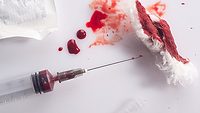Restoration Contractors Need to Proactively Manage Heat to Protect Employees

Photo credit: FG Trade / Creatas Video via Getty Images
I live, work, and play in Florida. In the winter, temperatures can reach and exceed 80 degrees. In the summer, temperatures don’t drop below 80 degrees. And I love the heat! However, I learned the hard way many years ago that if I don’t actively manage my heat exposure, I’ll pay the price.
Similarly, my work as an EHS director also takes me to job sites throughout the country. During the summer in the Deep South and Gulf Coast, the heat demands respect and management. The ability to manage employees’ heat exposure in these conditions can literally determine the success of the job.
In this article, I am going provide you with what is expected of employers, some resources for those expectations, and some proactive heat management practices you can provide at your restoration jobs. Disclaimer: I am not a doctor and the information in this article should not be considered medical advice. If you suspect you have a medical issue that may limit your ability to work in the heat, visit a doctor before you experience any problems.
WHAT OSHA EXPECTS
OSHA expects employers to be aware of extreme heat and protect their employees from illness from that heat. They have had the slogan “Water, Rest, Shade” for a few years now and use this as the basics for illness prevention. Other recommendations include acclimation, emergency planning, training, and monitor workers for heat illness. (1) I recommend restoration companies to utilize the information and training resources that OSHA provides on their heat exposure webpage.

HEAT REGULATIONS
OSHA is expanding on their effort to prevent heat-related illness. They announced a National Emphasis Program in April 2022 to push prevention indoors and outdoors. OSHA cites that the 3-year average of heat-related deaths has doubled since the early 1990’s. Additionally, in 2021 OSHA released a notice of proposed rule making to establish a federal heat standard. (2) All of this points to not only continued enforcement, but additional regulations that Restorers will need to eventually comply with.
BEST PRACTICES
Before launching into best practices I have observed, I want to emphasize the need to be proactive. When one employee starts experiencing heat problems, it is likely that others will soon have problems or already have them. This makes it very important to anticipate extreme heat (e.g. monitor the weather forecast), have needed items available (e.g. water, fans, and shade), and put them in place at the start of a work shift or project.
MONITORING THE HEAT INDEX
The National Institute for Occupational Safety and Health (NIOSH) has a heat safety tool app that can be loaded onto your cell phone. (3) It provides a wide range of useful features:
- A visual indicator of the Heat Index (“feels like” temperature)
- Precautionary recommendations specific to your Heat Index
- An hourly forecast of the expected Heat Index for the day
- Signs and symptoms of heat illnesses
- First aid information for heat illnesses
I strongly recommend making this App a part of your everyday procedures. Search for it in your phone’s App Store or Google Play.
HYDRATION STATIONS
I first stumbled on these while working for an electric motor service company with shops spread throughout the Southeast U.S. that did not have air conditioning. There is nothing special about them other than the convenience of what you need for hydration in one location. This company setup the station with the following:

- A very large cooler with bottled water and ice on a rolling cart
- Multiple cases of bottled water sitting beside the cooler at room temperature
- An assortment of electrolyte replacement powders and liquids
ELECTROLYTE REPLACEMENT DRINKS AND POWDERS
The concept of a sports drink that helps hydrate athletes is claimed to have started back in 1965 with Gatorade at the University of Florida. (4) From there blossomed an entire industry. Today there is a huge assortment of sports drinks that help with electrolyte replacement. Powders are also available from many of the drink manufacturers. This is where I have seen the most recent growth and offerings. Some new powders claim that when mixed into a bottle of water, they have the hydration capability of three bottles of water.
I can personally attest to how well these new powders work. I feel they help me with hydration more than a sports drink and they seem to be easier on my stomach. I first observed these new powders in use at a post-hurricane restoration job on the Louisiana Gulf Coast. Nurses that were hired to provide first aid and COVID-19 screening services provided a powder packet that was mixed with bottled water and provided to workers experiencing heat issues. I routinely watched workers recover in an hour or two after drinking this mix and resting under a canopy fans moving air.
ACCLIMATION
This is defined as the process or result of acclimating. (5) In other words, getting your body used to a climate. I first observed this put in place years ago at a federal facility in Florida. Contractors from northern climates would win bids on projects and expect to hit the ground running in the Florida heat. That never went well unless we first explained the practice of acclimation to them.
Generally, if they gradually worked their way into full work days, they avoided heat issues. This practice can be applied by Restorers for jobs in any hot climate or for work inside containment. The first few days of work will need to be shorter and have more breaks to allow worker’s bodies to acclimate to the hot environment.
MORE BREAKS

Almost going hand-in-hand with acclimation is providing more breaks during the work day. This is typically referred to as a work/rest schedule. The practice is that as the heat increases, you provide employees with longer periods to recover from the increased stress of working in high heat. The National Institute for Occupational Health and Safety (NIOSH) has an excellent 2-page guide with a chart that provides recommended schedules for different temperatures.
SHADE, AIR MOVEMENT, AIR CONDITIONING
Isolating employees from heat sources either during the work or during breaks is another effective practice to minimize the effects of heat. When outdoors in the sun, shade can provide that isolation. Air movement can provide cooling effects, whether in the shade or the work area. I have observed increased application of large, slow rotating industrial ceiling fans that move large quantities of air in hot indoors industrial applications.
TRAINING
OSHA lists very specific training components to cover for heat illness education. Please see the third item in the Resources section below. Here is a summary of the topics:
- Types of heat illnesses and their signs/symptoms
- Immediate first aid application
- Medical attention resources
- Acclimatization
- Job and personal risk factors
- Fluid replacement
- Work/rest periods
I recommend targeting a month to have heat training every year. Preferably prior the warmer months in your region.
Heat stress and illness is a risk that you either manage on your job or it will manage your job for you. Combine that with increased OSHA attention and the risk of serious employee impacts, Restorers are left with little choice but to proactively manage heat. With the resources I have listed below and the successful practices I just reviewed, I believe I have provided restorers with the tools to successfully complete jobs in high heat conditions.
Reference
- https://www.osha.gov/heat
- https://www.osha.gov/news/newsreleases/national/04122022
- https://www.cdc.gov/niosh/topics/heatstress/heatapp.html
- https://research.ufl.edu/publications/explore/v08n1/gatorade.html
- https://www.merriam-webster.com/dictionary/acclimation
Resources
- NIOSH Heat Stress Recommendations webpage: https://www.cdc.gov/niosh/topics/heatstress/recommendations.html
- NIOSH Heat Stress Work/Rest Schedules, Publication No. 2017-127: https://www.cdc.gov/niosh/mining/UserFiles/works/pdfs/2017-127.pdf
- OSHA Heat Prevention Training: https://www.osha.gov/heat-exposure/training
- OSHA Additional Heat Resources: https://www.osha.gov/heat-exposure/resources
Looking for a reprint of this article?
From high-res PDFs to custom plaques, order your copy today!






